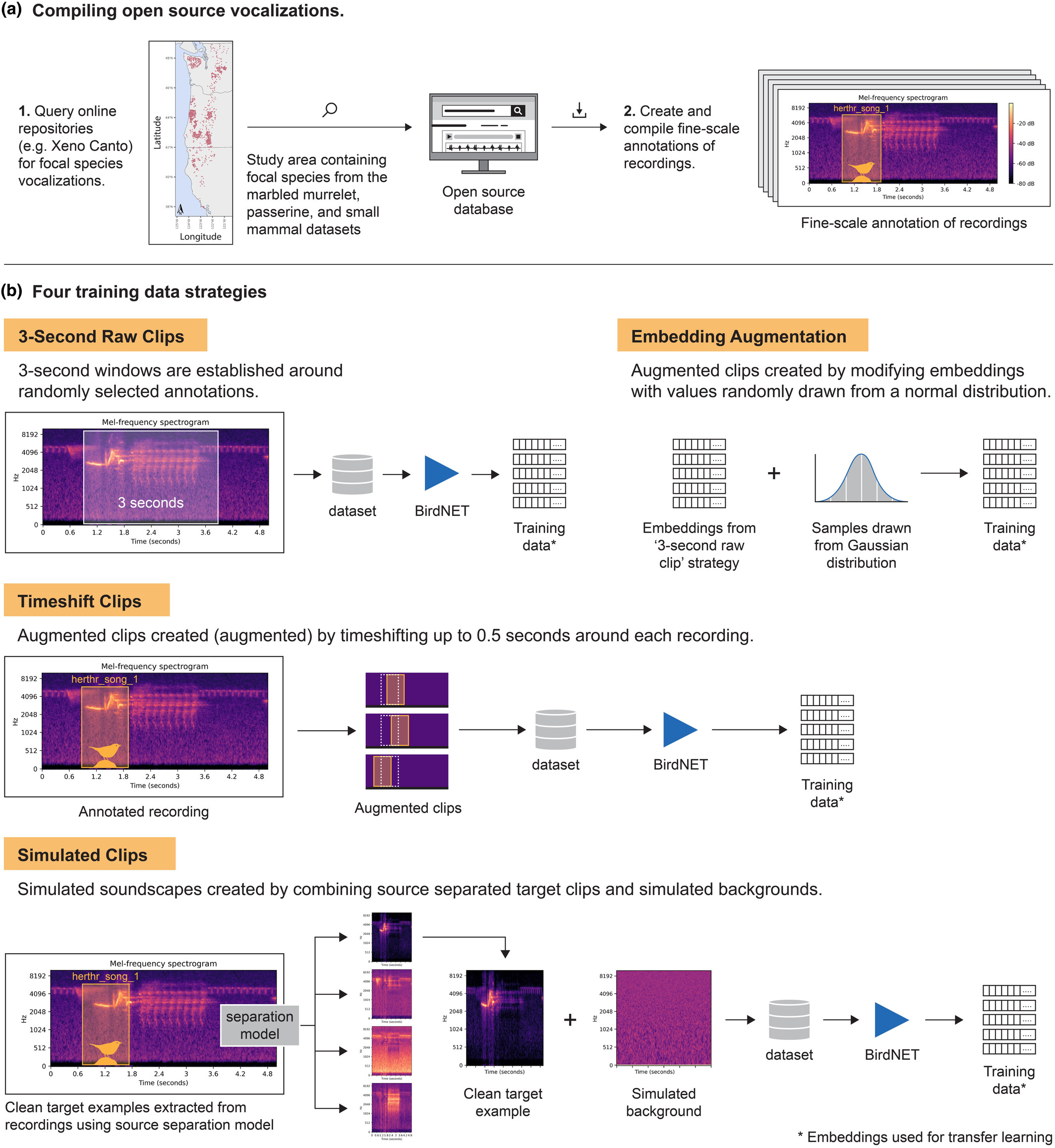Simulated soundscapes and transfer learning boost the performance of acoustic classifiers under data scarcity
Abstract/Summary
The biodiversity crisis necessitates spatially extensive methods to monitor multiple taxonomic groups for evidence of change in response to evolving environmental conditions. Programs that combine passive acoustic monitoring and machine learning are increasingly used to meet this need. These methods require large, annotated datasets, which are time-consuming and expensive to produce, creating potential barriers to adoption in data- and funding-poor regions. Recently released pre-trained avian acoustic classification models provide opportunities to reduce the need for manual labelling and accelerate the development of new acoustic classification algorithms through transfer learning. Transfer learning is a strategy for developing algorithms under data scarcity that uses pre-trained models from related tasks to adapt to new tasks.
Our primary objective was to develop a transfer learning strategy using the feature embeddings of a pre-trained avian classification model to train custom acoustic classification models in data-scarce contexts. We used three annotated avian acoustic datasets to test whether transfer learning and soundscape simulation-based data augmentation could substantially reduce the annotated training data necessary to develop performant custom acoustic classifiers. We also conducted a sensitivity analysis for hyperparameter choice and model architecture. We then assessed the generalizability of our strategy to increasingly novel non-avian classification tasks.
With as few as two training examples per class, our soundscape simulation data augmentation approach consistently yielded new classifiers with improved performance relative to the pre-trained classification model and transfer learning classifiers trained with other augmentation approaches. Performance increases were evident for three avian test datasets, including single-class and multi-label contexts. We observed that the relative performance among our data augmentation approaches varied for the avian datasets and nearly converged for one dataset when we included more training examples.
We demonstrate an efficient approach to developing new acoustic classifiers leveraging open-source sound repositories and pre-trained networks to reduce manual labelling. With very few examples, our soundscape simulation approach to data augmentation yielded classifiers with performance equivalent to those trained with many more examples, showing it is possible to reduce manual labelling while still achieving high-performance classifiers and, in turn, expanding the potential for passive acoustic monitoring to address rising biodiversity monitoring needs.
Publication details
| Published Date: | 2025-06-26 |
| Outlet/Publisher: | Methods in Ecology and Evolution |
| Media Format: |

Conceptual representation of (a) our training data collection and (b) our training data construction approaches including training on few raw examples (‘raw’), augmenting the raw examples with standard Gaussian noise (‘embedding’), time shifting (‘timeshift’) and soundscape simulation (‘simulated clips’).
Photo by: Matthew Weldy
ARMI Organizational Units:
Pacific Northwest - BiologyTopics:
Quantitative DevelopmentsPlace Names:
CaliforniaOregon
Pacific Northwest
Washington
Keywords:
amphibiansbioacoustics
biodiversity
monitoring
Soundscape
transfer learning
